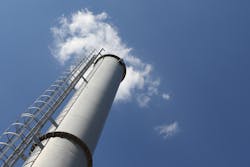In order to mitigate industrial emissions, you've got to first spot them
Mitigating carbon emissions is a goal for the modern manufacturer. Part of the challenge in this sustainability effort is determining where, exactly, your emissions are emitting from.
“Industrial orgs need more than greenhouse gas emissions reporting. They need tech that can help both executives and operators take action in their CO2 reduction efforts required by executives and operators. That’s according to AspenTech, which touts an additive solution to strategically help industrial enterprises achieve their net zero targets
We wanted more perspective on emissions, so we connected with Ron Beck, senior director, solutions marketing at AspenTech, to dive deeper. Take a look…
Smart Industry: How good are manufacturers at knowing about their emissions?
Ron: Europe is further along in this process due to regulatory standards, but US companies are starting to make progress in understanding their carbon emissions. Gaining a granular understanding of a company’s carbon footprint can be complicated. Many organizations rely on spreadsheets or external consultants to manage the time-intensive process of gathering data from multiple plants in order to manage their emissions. Current approaches are typically expensive and imprecise, not to mention they make it challenging to identify and remediate problem areas in real-time. A recent case study at a European refinery has proven that simply providing granular, real time, accurate emissions data can result in immediate 5% emissions savings through simple operational changes.
Smart Industry: What areas/assets in industrial facilities are most commonly emission trouble spots?
Ron: There are a few common blind spots asset-intensive organizations typically face that produce significant carbon emissions. Heating up materials requires a lot of energy and is the basis for many elements of production, especially when it comes to refining metals, making batteries, or producing chemicals such as fertilizers. Leaks are another frequent trouble spot since they can be difficult to detect and are prone to occur with old pipelines or equipment. Additionally, when a plant experiences an equipment failure that causes a sudden shut down, a spike in energy use is needed to restart production, which leads to increased emissions. Digital solutions can help manufacturers specifically identify, and then remediate, these blind spots.
Smart Industry: How are digital tools enabling better emission-control approaches?
Ron: Digital solutions are giving asset-intensive organizations the ability to not only report emissions but guide smarter decision-making in support of their sustainability goals. Manufacturers can pinpoint precisely where high carbon emissions are occurring within their plants or due to inefficiency in their operational processes. They then understand where to invest in addressing those emissions. Smart solutions can eradicate vague calculations previously done via spreadsheets and allow for more precise measurements that also take into account factors such as whether the company is abiding by EU or US guidelines.
Digital tools can also help automate essential processes and encourage consistency. In real-time, teams at all levels of the organization can see and begin to remediate trouble areas right away, rather than days, weeks or months later, when it may be too late to fix the problem. In addition, teams across the organization that may all be working on different aspects of emission-reduction can be confident that they are working from the same data and interface as their peers.
Digital solutions also enable a new level of transparency. Regulators, auditors, investors and company leadership all need visibility into emissions data. In the near future, the same agencies auditing company finances will be auditing their emissions. Being able to provide up-to-date, detailed emissions reports will help companies ensure compliance and enable more efficient reporting and audit processes.
Smart Industry: What does the near future of emissions management look like?
Ron: If manufacturing sites can address some of the common blind spots I’ve mentioned here, they could see a minimum of 10% improvement in overall energy efficiency within a few years. That number is proportional to CO2 reduction, meaning it could be up to 30% for others.
Energy efficiency leading to emissions-reduction is often the lowest-hanging fruit for asset-intensive industries. It offers a significant path to making progress toward the industry’s aggressive sustainability goals.
